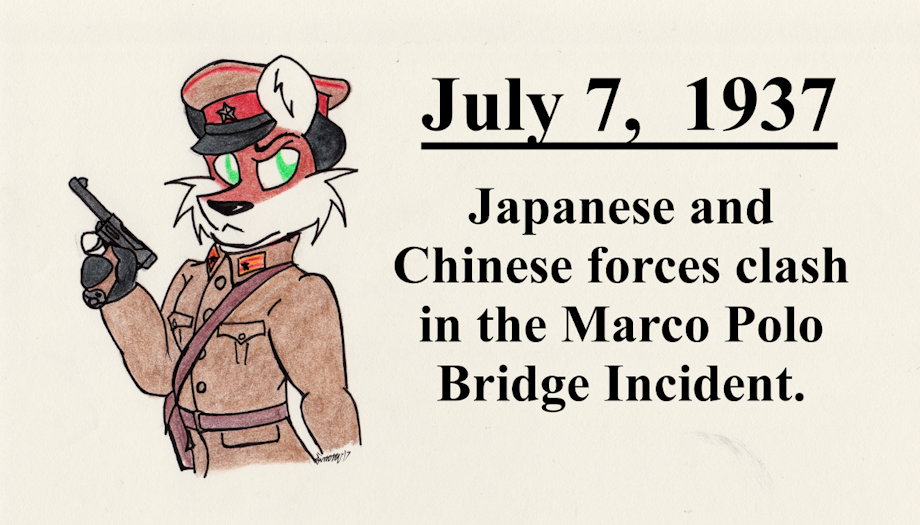On July 7, 1937, forces of the Republic of China's National Revolutionary Army and Japan's Imperial Japanese Army engaged in combat with each other at Wanping and the Marco Polo Bridge (also known as the Lugou Bridge). While Japanese troops were allowed to be stationed at certain points in China as well as conduct military exercises freely with the country as part of Boxer Protocol, Imperial Japan had deployed between 7000-15000 men within China's borders by July 1937, far more than the European powers which were also part of the Boxer Protocol. This combined with the Japanese invasion of Manchuria in 1931 and subsequent establishment of the puppet state of Manchukuo served to drastically elevate tensions between China and Japan. Tensions evolved into open hostilities on the night of July 7, 1937, when Chinese and Japanese troops exchanged fire at Wanping (near Beijing). By early morning of July 8, reinforcements to both sides had arrived and full-scale hostilities began shortly after the return of the mayor of Wanping, Wang Lengzhai, from a failed attempt to resolve the situation diplomatically. The Chinese defenders successfully held their ground, including the bridge, and a ceasefire arrangement was reached on July 9. However, Japanese forces continued to violate the ceasefire and continued to attack not only Wanping but also Beijing, resulting in the battle of Beiping-Tianjin and the opening salvo of the Second Sino-Japanese War which would in turn become a significant part of the Second World War.
Keywords
male
1,190,837,
fox
247,580,
vulpine
36,277,
this day in history
249,
tdih
244,
wwii
233,
second world war
15,
second sino-japanese war
1,
july 7
1,
marco polo bridge incident
1,
lugou bridge
1
Details
Published:
7 years, 7 months ago
07 Jul 2017 22:47 CEST
Initial: 7134fb1bc76cc95b8330778a7d7c09de
Full Size: 53bb267920d8f9362c4ad5c588bedbd3
Large: 87691833eb330a148461e5868e61626a
Small: e9974c795f1c3e6c2d560665255f325b
Stats
32 views
5 favorites
2 comments
